It has been another week since I looked at this project. Where does the time go? I think that work is getting in the way of life. Anyway, today I finished making the 10" bending form and bent a board around it.
I did something different this time. This time I tried to bend an oak board. I have read that of all the woods used for bending, maple is one of the least forgiving, and oak is one of the most forgiving. So I have been trying to bend the most difficult wood while trying to learn how to do this. Maybe that explains why so much of it has fractured.
I will be making the neck out of curly maple, so I wanted to make the hoop out of maple as well, but if I can get a better hoop out of oak, I will mix the two woods together in the banjo.
So I went back to the Big Box store and found some oak shelving that is the same dimensions as the maple boards I have been using 1/4 X 4 X 48.
I have also read that it is easier to bend wood that has been quarter sawn instead of flat sawn, so I tried to cherry pick wood that looks like it is close to quarter sawn. Here is a description of the difference.
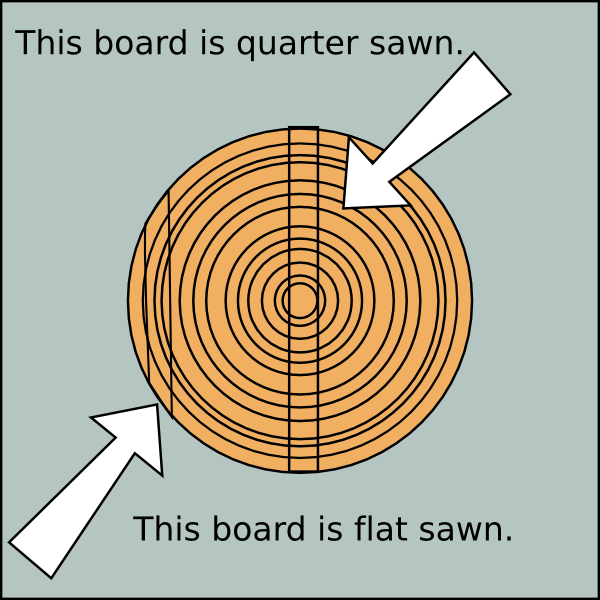
Quarter Sawn Wood and Flat Sawn Wood
In the figure, you can see that the quarter sawn wood has the growth rings perpendicular to the surface of the board, whereas the flat sawn wood has rings that are nearly parallel to the surface of the board. Since the wood is likely to split along the ring patterns, the quarter sawn wood is less likely to split than the flat sawn when bent in the direction perpendicular to the flat surface of the board.
When picking out the wood, it is easy to identify the boards that are quarter sawn by the looking at the end of the board and seeing many rings that are perpendicular to the board. That is what I did with the oak.
Before I bent the wood, I had to secure the tops of the angle irons to each other with a piece of wood.
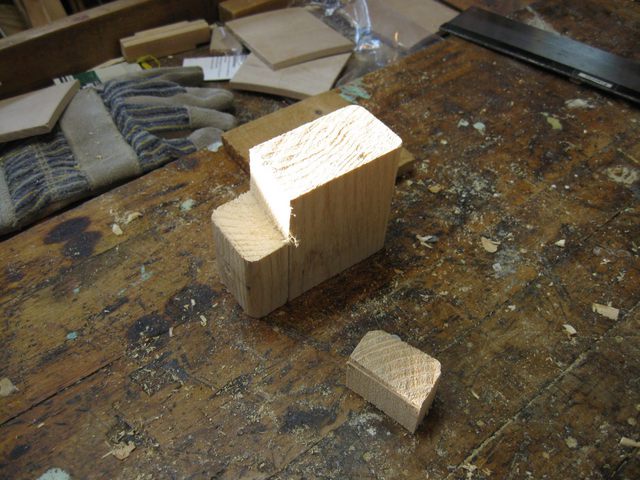
A Small Block of Wood
I screwed the two angle irons into the wooden block and we are good to go.
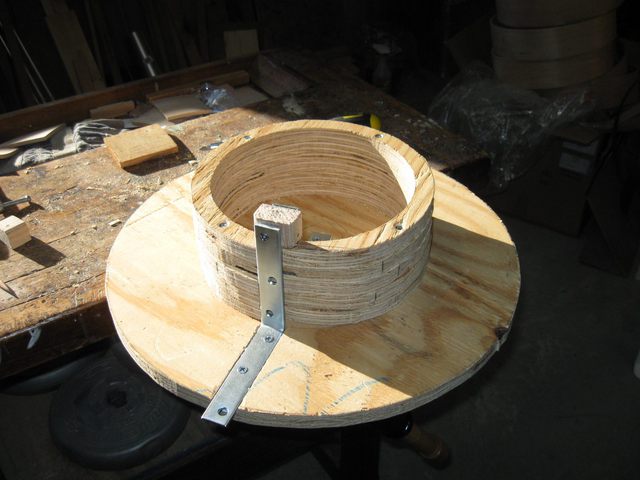
The New Form is Ready To Go
Here are the details of the timing for this bend.
- Start the steamer at 10:57
- Full steam and insert board at 11:30 - 33 minutes to start
- Turn the board over at 11:45 - 15 minutes on first side
- Pull out and bend 12:00 - 15 minutes on the second side.
The same procedure was used as before. After the time for the steaming was up, I quickly removed the board, took it immediately to the form, stuck the tail of the board into the notch and wrapped it around the form. The entire sequence takes 10 to 15 seconds tops. After that, the board becomes too cool to bend.
Unfortunately, the board split again in a couple of places. Here is a small split.
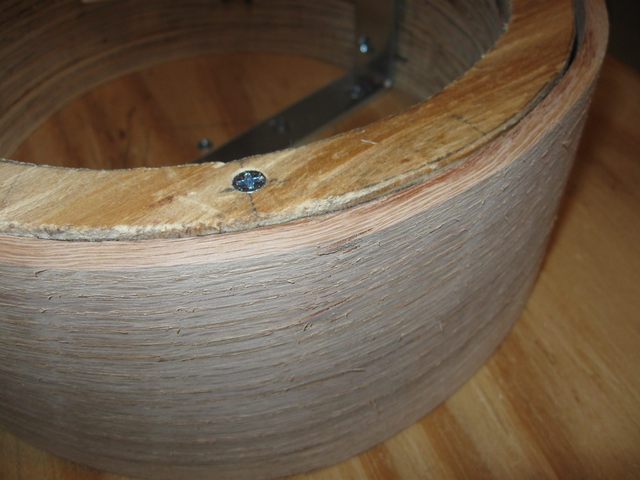
There is a Small Split Here
There is a larger split right where the board goes over the bracket.
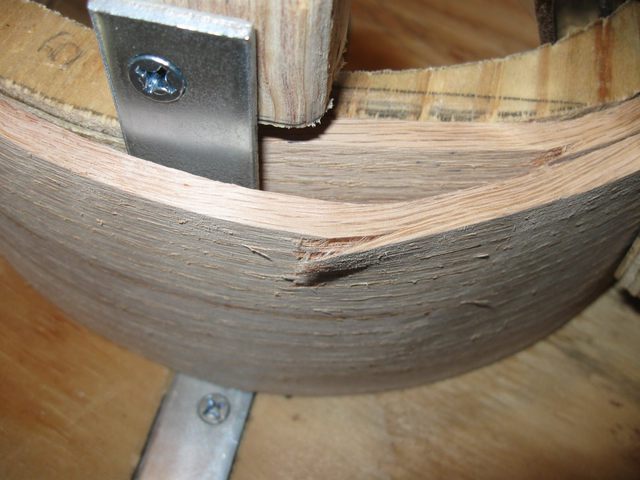
This Split Is Larger
Then there is another split on the part that is under the overlap.
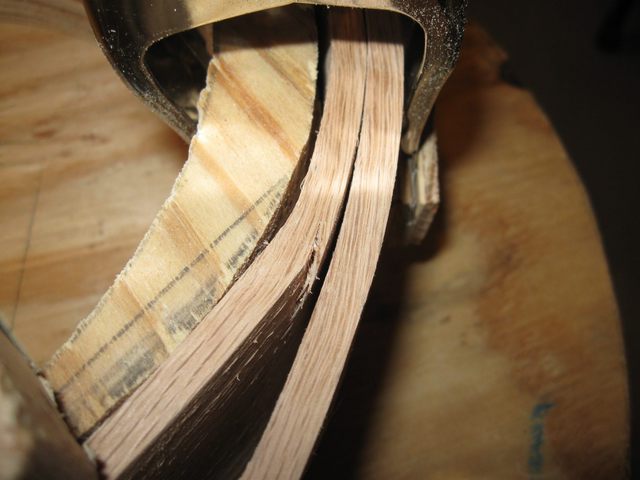
This Is A Third Split
Other than that, the board wrapped around the form pretty well.
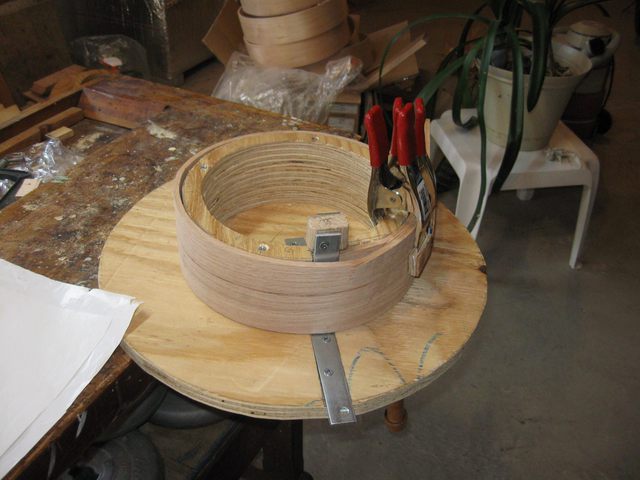
The Oak Is All Wrapped Up
I don't know what is going on with all this wood splitting like that. Too tight a radius? Bad wood? Not enough steam? Maybe the whole theory is just wrong. But people bend wood into hoops every day, so it must be possible. Back to the drawing board.
